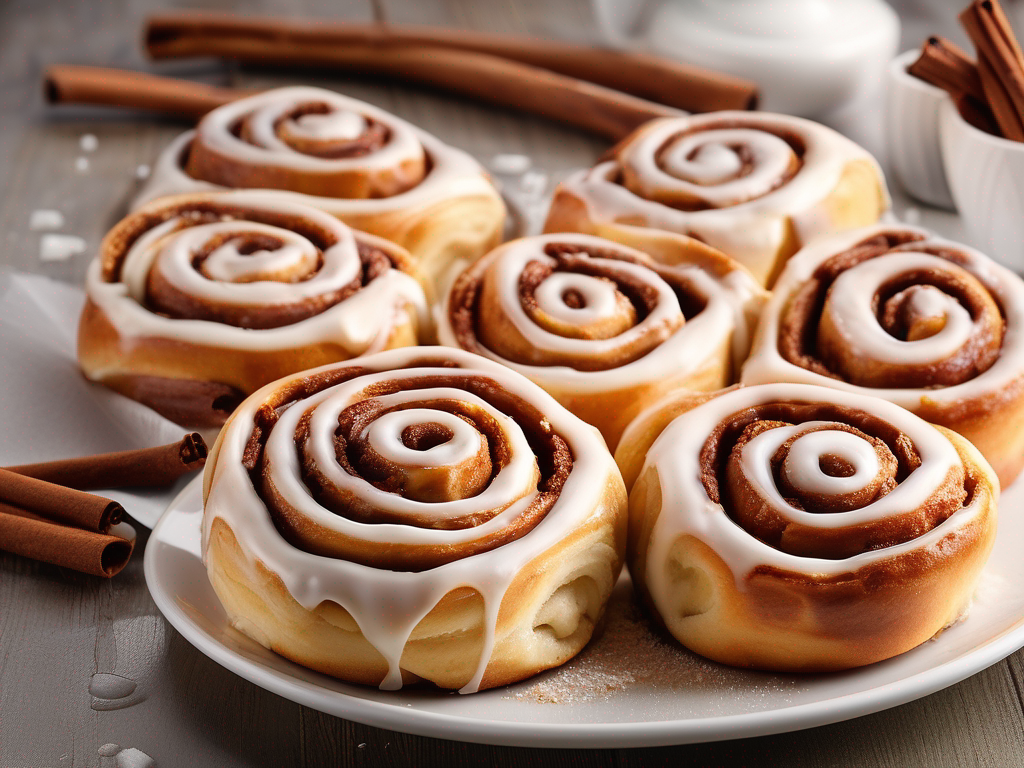
Are Cinnamon Rolls Still Safe to Eat After Being Left Out Overnight?
Get Your Free Food Safety Cheat Sheet
30 most common foods with instant answers. Print it and stick it on your fridge—completely free!
Are Cinnamon Rolls Still Safe to Eat After Being Left Out Overnight?
Cinnamon rolls are a beloved treat enjoyed by many for their sweet, cinnamon-spiced goodness. However, when it comes to food safety, leaving perishable items like cinnamon rolls out at room temperature can raise concerns. In this blog post, we will explore whether cinnamon rolls are still safe to eat after being left out overnight and provide practical tips for ensuring food safety. (Cinnamon rolls)
Understanding Food Safety Guidelines
Before delving into the specifics of cinnamon rolls, it's important to understand the basic principles of food safety. The USDA recommends the following guidelines for perishable foods:
- The 2-Hour Rule: Perishable foods should not be left out at room temperature for more than 2 hours.
- Temperature Danger Zone: Bacteria can multiply rapidly in the temperature danger zone, which is between 40°F and 140°F.
- Refrigeration: Perishable foods should be refrigerated promptly to slow down bacterial growth.
Factors to Consider
When determining whether cinnamon rolls are safe to eat after being left out overnight, several factors come into play:
Ingredients
- Dairy: Cinnamon rolls often contain dairy products like milk, butter, and cream cheese, which are prone to bacterial growth at room temperature.
- Eggs: If the cinnamon rolls have a custard or egg wash, they can also pose a food safety risk when left unrefrigerated.
- Frosting: The sugar content in frosting can help inhibit bacterial growth to some extent.
Environment
- Temperature: Room temperature fluctuations can impact the safety of perishable foods.
- Humidity: High humidity levels can create a breeding ground for bacteria.
Duration
- Time: The longer cinnamon rolls are left out, the higher the risk of bacterial contamination.
Risks of Eating Cinnamon Rolls Left Out Overnight
Leaving cinnamon rolls out overnight can increase the risk of foodborne illness due to bacterial contamination. Some potential risks include:
- Foodborne Illness: Consuming cinnamon rolls that have been left out for an extended period can lead to food poisoning.
- Spoilage: The texture and taste of cinnamon rolls may be compromised after being left out overnight.
Tips for Ensuring Food Safety
To enjoy cinnamon rolls safely, consider the following tips:
Storage
- Refrigerate Promptly: If you are unable to consume the cinnamon rolls immediately, refrigerate them within 2 hours of preparation or purchase.
- Use Airtight Containers: Store cinnamon rolls in airtight containers to prevent exposure to air and moisture.
Reheating
- Thoroughly Reheat: When reheating cinnamon rolls, ensure they reach an internal temperature of 165°F to kill any bacteria.
- Discard If Unsure: If in doubt about the safety of cinnamon rolls, it's best to discard them to avoid potential foodborne illness.
Monitoring
- Check for Signs of Spoilage: Discard cinnamon rolls if they show signs of mold, off odors, or unusual texture.
- Follow Expiration Dates: Adhere to expiration dates to ensure the freshness and safety of cinnamon rolls.
Conclusion
In conclusion, while the delicious aroma of cinnamon rolls may tempt you to indulge, it's essential to prioritize food safety. Cinnamon rolls left out overnight can pose a risk of foodborne illness due to bacterial contamination. By understanding the risks, following proper storage guidelines, and reheating precautions, you can enjoy your favorite treat without compromising your health. Remember, when in doubt, it's better to be safe than sorry. Enjoy your cinnamon rolls responsibly!
For more information on cinnamon rolls and other food safety topics, visit [here](/food/cinnamon rolls). Stay safe and enjoy your treats responsibly! (Cinnamon rolls)
Authoritative Food Safety References
These agencies and university labs inform every tip and health precaution we publish.
USDA FoodKeeper – Cold Storage Guidelines
Official refrigerator, freezer, and pantry timelines maintained by the U.S. Department of Agriculture.
Visit USDA FoodKeeperFDA Produce Safety Rule & Grower Guidance
Field-to-fridge handling practices that prevent contamination of fruits, vegetables, and leafy greens.
Visit FDA Produce SafetyCDC Foodborne Illness Prevention Hub
Surveillance-backed guidance on pathogens, symptoms, and steps to reduce foodborne illness risk.
Visit CDC Food SafetyUC Davis Postharvest Technology Center
University research detailing optimal storage atmospheres for produce after harvest.
Visit UC Davis PostharvestPenn State Extension – Home Food Preservation & Safety
Peer-reviewed extension bulletins on safe canning, chilling, and reheating practices.
Visit Penn State ExtensionGet Your Free Food Safety Cheat Sheet
30 most common foods with instant answers. Print it and stick it on your fridge—completely free! Want more? Upgrade to the complete guide with 70+ foods.
Scan your food directly and get instant safety info using our AI-powered camera feature.